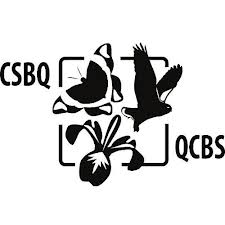Adam Pedersen

Project
Variation in tissue concentrations of legacy and non-target screened contaminants among top marine predators in the Arctic: new methods and insights from dietary tracers and stable carbon isotopesIn the Arctic, top predator exposure to toxic contaminants is substantial, especially in sea-ice dependent marine mammals. However, there are large differences in tissue concentrations of pollutants among certain well-studied top predator marine mammals, while, for others, contaminant data is non-existent. In particular, polar bears and killer whales show large differences in tissue concentrations of pollutants such as persistent organic pollutants (POPs) and mercury (Hg). Yet, comparisons made between different regions and over different time frames may, at least in part, explain such contaminant trends between these species. Other species, such as narwhals and pilot whales, have been too data deficient with respect to POP concentrations to be included in any assessments. Thus, given limited knowledge of contaminant concentrations in certain marine mammal predators, and a lack of spatially- and temporally-comparable sampling, no studies to date have examined the mechanisms leading to differences in tissue concentrations of contaminants among top predators in the Arctic, despite their potential toxicity. Here, we use samples from harvests from local Greenlandic communities of five top predator species within the same broad region and over a similar time period to assess variations of tissue POP concentrations in blubber. Polar bear, narwhal, and pilot whale blubber samples were collected between 2013 and 2021 in Southeast Greenland, while all killer whale biopsies were collected in 2013 and 2014. Greenland shark samples were collected in Cumberland Sound, Nunavut, Canada in 2013 along with prey samples from its food chain. We further determined fatty acid (FA) signatures, that are used to determine diet, and stable carbon isotopes to evaluate the extent to which variation in POP concentrations were explained by differences in diet. Chemicals are being extracted from blubber using new QuEChERS (Quick, Easy, Cheap, Effective, Rugged, and Safe) methodology, saving time, energy and lowering costs. Preliminary results from my first quantitative comparison shows large differences in POP concentrations among Arctic marine top predators and that diet may play a role in shaping these differences. My future studies in this project will utilize nontargeted contaminant analysis to evaluate for new contaminants and to provide insight into the true and complete extent of exposure in top predators. My findings on the influence of diet on POP concentrations have important implications for understanding how climate change and associated dietary changes may affect contaminant exposures among highly susceptible top predators in an ecosystem undergoing drastic changes.
Keywords
Arctic, Persistent Organic Pollutants, Marine mammalsPublications
1- Development and validation of a modified QuEChERS method for extracting polychlorinated biphenyls and organochlorine pesticides from marine mammal blubberPedersen, Adam F., Rune Dietz, Christian Sonne, Lan Liu, Aqqalu Rosing-Asvid, Melissa A. McKinney
2023 Chemosphere
2- Feeding and biological differences induce wide variation in legacy persistent organic pollutant concentrations among toothed whales and polar bear in the Arctic
Pedersen, Adam F., Rune Dietz, Christian Sonne, Robert J. Letcher, Anna M. Roos, Malene Simon, Aqqalu Rosing-Asvid, Steven H. Ferguson, Melissa A. McKinney
2024 Science of The Total Environment
